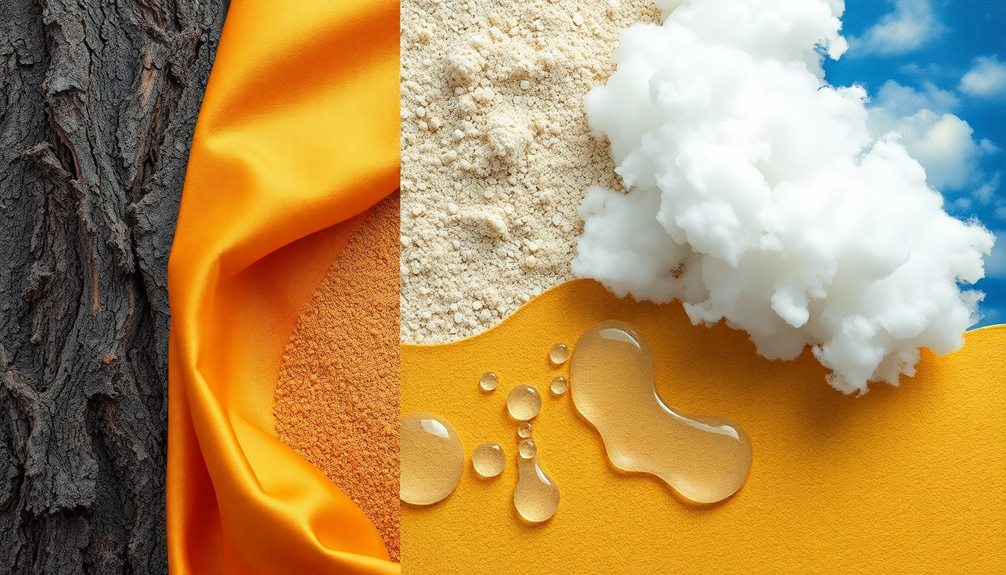When writing art comparisons, you'll want to sharpen your analytical skills and enhance your appreciation for visual expression. Start with a clear thesis statement that outlines your main argument. Use effective structures, like point-by-point or block methods, to organize your thoughts. Compare specific elements, such as style, technique, and context, using descriptive language to engage and inform your audience. Incorporating visual evidence strengthens your analysis. Don't forget to consider how differing cultural backgrounds might influence interpretations. Keep exploring to uncover deeper insights that can elevate your writing.
Key Takeaways
- Establish a clear thesis statement to guide your analysis of artworks and their comparisons.
- Utilize structured formats like point-by-point or block method for enhanced clarity in your writing.
- Incorporate visual evidence to support your analysis and help readers visualize the artworks.
- Define criteria for comparison, focusing on elements like style, technique, and historical context.
- Engage with diverse audiences to encourage varied interpretations and enrich the discussion.
Introduction
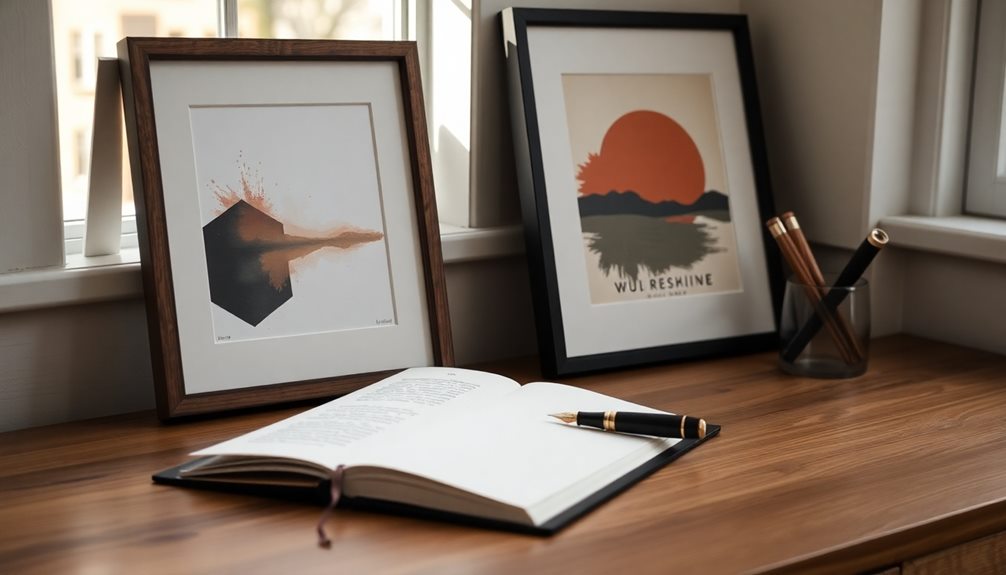
When diving into art comparisons, you'll find that analyzing and contrasting different artworks can reveal fascinating insights about style, technique, and themes. Writing effective art comparisons involves more than just observations; it requires a structured approach to articulate your ideas clearly.
Start with a strong thesis statement that outlines your analysis's purpose and the specific aspects you'll explore. This foundation will guide your writing and keep your comparison focused.
Consider employing a structured format like the point-by-point or block method to organize your thoughts effectively. This structure not only helps you maintain clarity but also ensures that your arguments are coherent and compelling. Additionally, incorporating visual evidence—whether through images or vivid descriptions—strengthens your analysis, allowing readers to grasp the nuances of each artwork.
Engaging in comparative analysis can also reflect similar principles found in iterative processes for continuous improvement, enhancing your understanding of both art and the creative process behind it.
Engaging in comparative analysis not only sharpens your critical thinking skills but also deepens your appreciation for the diverse expressions found in art. As you write, remember that every comparison opens a window into the artistic intentions and historical contexts that shape these works, enriching your understanding of the art world.
Key Concepts and Definitions
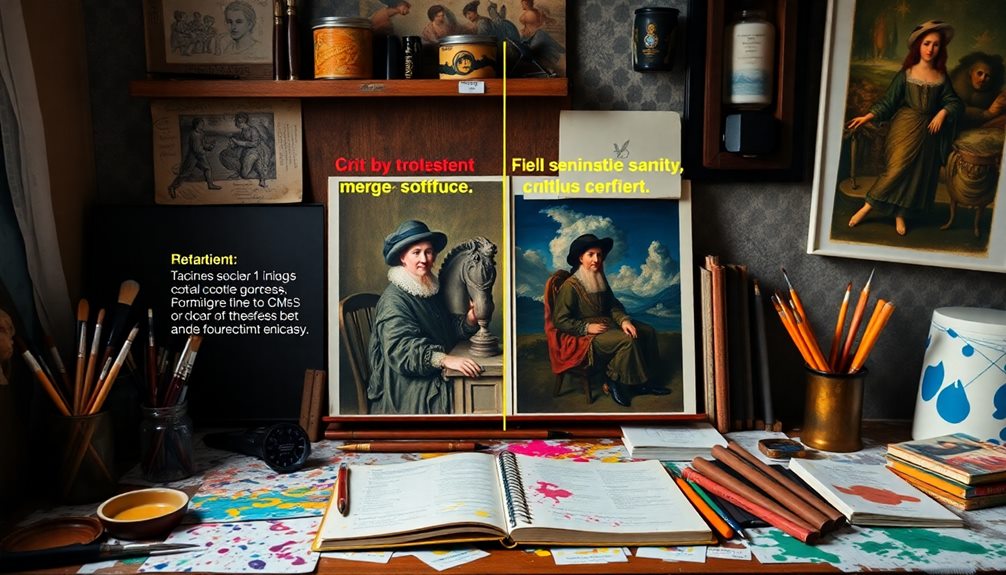
Understanding key concepts and definitions is crucial for making effective art comparisons. When you analyze and contrast two or more artworks, you need to highlight their similarities and differences in style, technique, themes, and context.
Start with formal analysis, which involves examining visual elements like color, line, and composition. This helps you see how these components function in each artwork. Additionally, just as AI enhances customer interactions through tailored communication, your analysis should aim to create a connection between the viewer and the artworks.
Contextual analysis is equally important, as it considers the cultural and historical background that shapes each piece, giving your comparisons depth.
As you write about art, utilizing a clear thesis statement is essential. This statement articulates the main argument or insight derived from your comparison and guides your analysis throughout the essay.
A well-structured comparative art essay typically includes an introduction presenting the artworks and thesis, body paragraphs exploring each aspect of comparison, and a conclusion synthesizing your findings.
Essential Writing Techniques
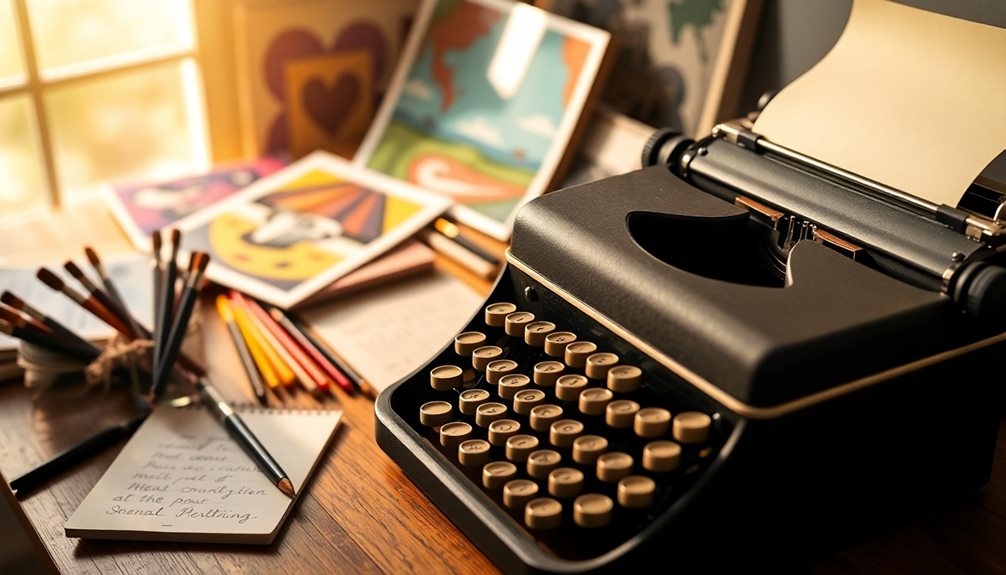
To effectively craft your art comparisons, kick off with a clear structure that guides the reader through your analysis. Start with an introductory sentence outlining the artworks you're comparing and the criteria for comparison.
Focus on specific elements like style, technique, subject matter, and historical context, which will help you provide a comprehensive analysis. In addition, conducting thorough keyword analysis can enhance your visibility and relevance in the art comparison niche, as it aligns with topic research strategies.
As you write about art, employ descriptive language and vivid imagery to engage your readers. This creates a visual connection between the artworks, allowing them to see the nuances you're highlighting.
Incorporate direct quotes or references from relevant art critics or scholars to bolster your points and lend credibility to your analysis. When you quote an expert, it adds depth and authority to your writing.
Art Comparison Scenarios
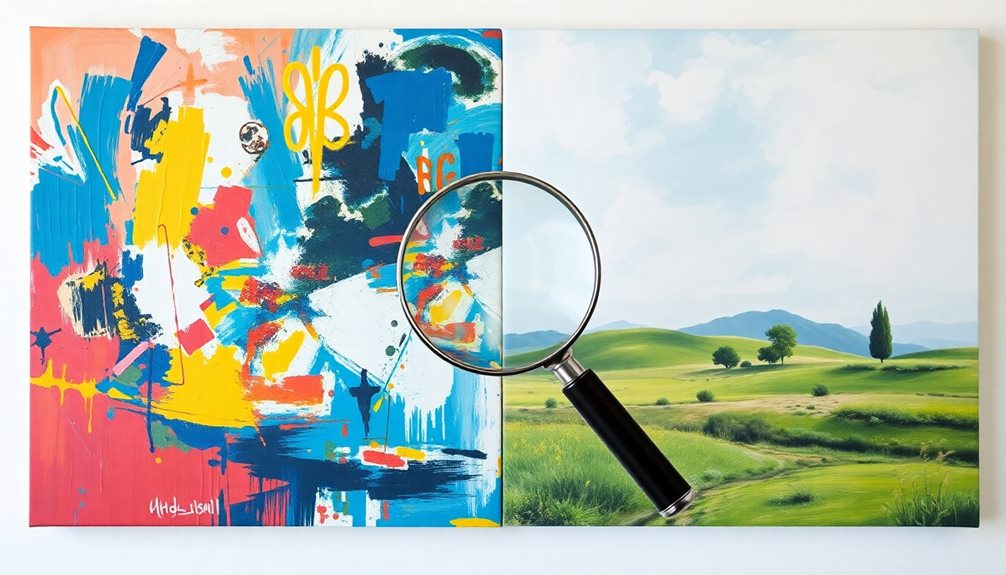
Art comparisons can take many forms, each offering unique insights into the creative process and cultural significance of different works. When you write your comparisons, consider focusing on stylistic similarities and differences between artists or movements. For instance, you might analyze how the use of color in Impressionism contrasts with the bold forms of Cubism, highlighting the influence of their respective contexts.
Effective comparisons often delve into the mediums and techniques employed by artists. By examining thematic elements, you can uncover deeper meanings behind their intentions and cultural impacts. Start with a clear thesis statement that defines your main argument, guiding your analysis.
Incorporating visual evidence—like images or detailed descriptions—can significantly enhance your writing. It provides clarity and helps your audience visualize the artworks in question.
Organize your comparison in a structured manner, such as point-by-point or block format, to maintain coherence and flow throughout your discussion.
Tips and Best Practices

When crafting effective art comparisons, it's crucial to define clear criteria for your analysis. Focus on elements like themes, techniques, historical context, or emotional impact to provide a structured approach. This clarity helps you tackle your writing tasks more efficiently.
Use specific examples from each artwork to illustrate similarities and differences. Reference visual elements like color, composition, and form to strengthen your points. Employ comparative language effectively—terms like "similarly," "in contrast," and "while" will guide your readers through your analysis and enhance clarity.
Incorporate relevant historical and cultural context to enrich your comparisons. Explain how these factors influence the works and the artists' intentions. This added depth can make your writing more insightful and engaging.
Audience Engagement and Feedback

Engaging your audience during art comparisons not only enhances their understanding but also encourages a deeper appreciation of the works. By highlighting similarities and differences in style, technique, and thematic elements, you can captivate their attention and make the experience more enriching.
Incorporating visual aids, like side-by-side images or charts, can clarify complex relationships between artworks and keep your audience focused.
Don't hesitate to solicit feedback from viewers after your presentation. Their insights can be invaluable, helping you refine your analysis and adapt to their interests.
Creating an interactive environment is key; invite your audience to ask questions and share comments during discussions. This not only fosters audience engagement but also makes the comparison process more dynamic.
Encouraging audience members to express their interpretations and personal connections to the art enables richer dialogue and creates a more inclusive experience.
Audience Interpretation Variability
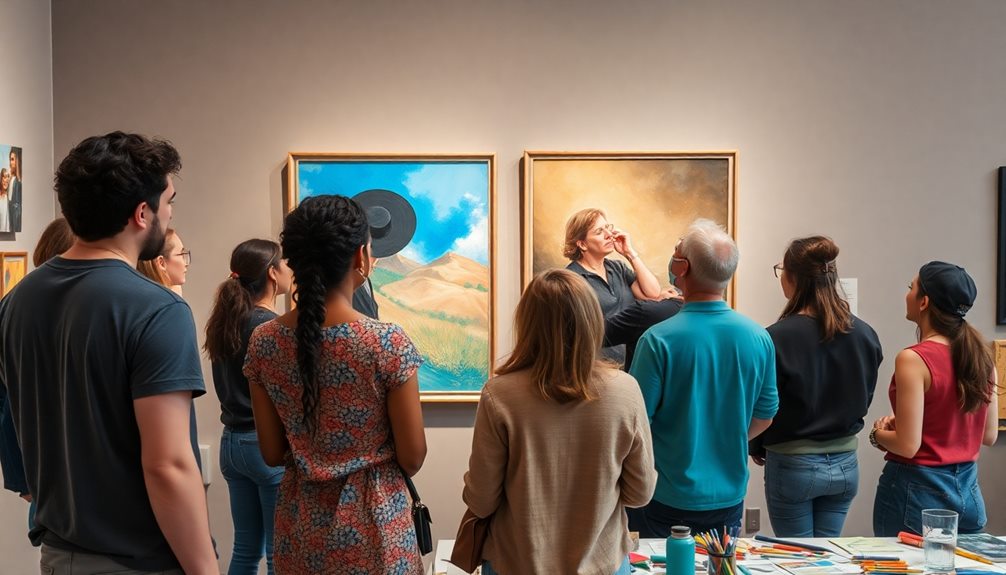
Understanding that audience interpretation can vary widely enriches your discussions about art. Each viewer brings their own unique experiences, cultural backgrounds, and personal beliefs to the artwork, which can lead to a diverse range of emotional responses and understandings.
Factors like age, education level, and previous exposure to art significantly influence how individuals perceive and interpret what they see, highlighting the subjective nature of art appreciation.
The context in which art is presented also plays a crucial role in shaping audience interpretation variability. Gallery settings, accompanying texts, and social discussions can all alter perceptions of meaning and value.
When you engage with diverse audiences, you'll likely uncover contrasting interpretations that showcase the breadth of perspectives surrounding a single piece or comparison between multiple works.
This variability in interpretation underscores the importance of clear artist statements, where creators articulate their intentions while also remaining open to the myriad ways their work might be understood.
Additional Resources

How can you enhance your art comparison writing skills? Start by diving into "A Short Guide to Writing About Art" by Sylvan Barnet. This resource offers sample essays and effective guidelines that can sharpen your ability to compare artworks meaningfully.
If you prefer a hands-on approach, "Art-Write" provides a practical workbook format filled with prompts and exercises that stimulate your creativity in writing art comparisons.
Don't overlook "A Guide to Writing in Art and Art History," which outlines essential documentation styles and conventions tailored for art writing. These resources will help you craft clearer and more structured artist statements, vital for conveying your insights.
Additionally, explore online resources and e-books that allow you to highlight and take notes directly, making it easier to reference when comparing different artworks.
You might also consider enrolling in an art class or utilizing educational platforms that offer instructor-led or independent courses focused on art writing and comparison techniques.
Frequently Asked Questions
How to Write an Art Comparison?
To write an art comparison, start by selecting two artworks with shared themes. Analyze their unique features, then use comparative language to discuss similarities and differences, incorporating context about the artists and their intentions.
How Do You Start an Introduction for an Art Essay?
To start your art essay introduction, clearly state the artworks, their artists, and focus areas. Offer brief historical context, present your thesis, and engage readers with a compelling hook to draw them in.
What Is the Assessment and Analysis of a Work of Art or Idea Often Through Writing or Discussion Called?
The assessment and analysis of a work of art or idea through writing or discussion is called art criticism. You evaluate its aesthetic, historical, and contextual significance, fostering a deeper understanding and appreciation of the artwork.
How Do You Write a Good Art Analysis?
To write a good art analysis, start by observing the piece closely. Consider its elements and context, use specific terminology, and structure your thoughts logically to effectively convey your insights and conclusions.
Conclusion
In conclusion, mastering art comparisons can elevate your writing and deepen your understanding of the artworks you analyze. By applying the techniques and tips outlined in this guide, you'll engage your audience and encourage meaningful discussions. Remember, art is subjective, and different interpretations enrich the conversation. Keep exploring, experimenting, and sharing your insights, and you'll continue to grow as a writer and an art enthusiast. Embrace the process and enjoy every moment of it!





